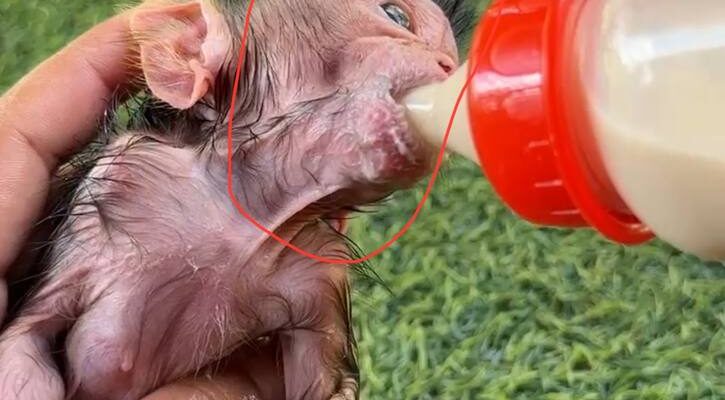Caring for a baby monkey is a deeply rewarding experience, but it also comes with great responsibility. Just like human infants, baby monkeys require proper nutrition, hygiene, and attention to ensure healthy growth. If you’ve found yourself in a situation where you need to care for a baby monkey — whether orphaned, rescued, or under temporary rehabilitation — one of the most crucial tasks is feeding it milk correctly. This guide offers practical steps on how to give milk to a baby monkey and how to provide the nurturing environment it needs to thrive.
1. Choose the Right Type of Milk
Never give cow’s milk directly to a baby monkey, as it can be too harsh on their stomach and may cause digestive issues. Instead, use specially formulated primate milk replacer, goat’s milk, or a vet-approved infant formula designed for non-human primates. Always consult a wildlife veterinarian or primate care expert to choose the safest option.
2. Use a Proper Feeding Bottle
Baby monkeys have small mouths and need a soft nipple that mimics their mother’s. Use a small animal nursing bottle with a gentle, slow-flow nipple. Before feeding, make sure the bottle is sterilized and the milk is warmed to body temperature (around 100°F or 38°C) — not too hot, not too cold.
3. Feeding Position and Technique
Hold the baby monkey gently, supporting its head and body as you would a human baby. It should be semi-upright, not lying on its back. Insert the nipple carefully into the mouth and allow the baby to suckle at its own pace. Never force-feed, as this could lead to aspiration (milk entering the lungs), which can be fatal.
For newborns, feeding may be required every 2–3 hours, even during the night. As the monkey grows, feeding intervals can be gradually extended.
4. Cleanliness is Crucial
After every feeding, clean the bottle and nipple thoroughly. Wipe the monkey’s mouth with a soft cloth and ensure that it remains dry and warm. Poor hygiene can lead to infections and digestive issues in baby monkeys.
5. Monitor Weight and Health
Weigh the monkey daily using a sensitive digital scale. A healthy baby monkey should show consistent weight gain. Watch out for signs of illness such as lethargy, bloating, diarrhea, or refusal to eat. Any abnormalities should prompt an immediate visit to a primate veterinarian.
6. Provide Warmth and Comfort
Baby monkeys are extremely sensitive to cold. Use a soft blanket or heating pad set to low to maintain body warmth, especially after feeding. They also need emotional comfort, so holding and gently cuddling them can reduce stress and mimic the maternal bond.
7. Gradual Weaning and Social Development
As the monkey grows (around 3–6 months), introduce soft fruits, mashed vegetables, and specially formulated primate foods. Social development is also crucial. If possible, the baby monkey should eventually be introduced to other monkeys in a safe environment to learn essential behaviors.
Final Thoughts
Feeding and caring for a baby monkey is not just about survival — it’s about ensuring proper development, physical health, and emotional security. Always seek guidance from licensed professionals and remember that wild animals should ideally be raised in their natural environment or under expert rehabilitation, with the goal of eventual release whenever possible.



